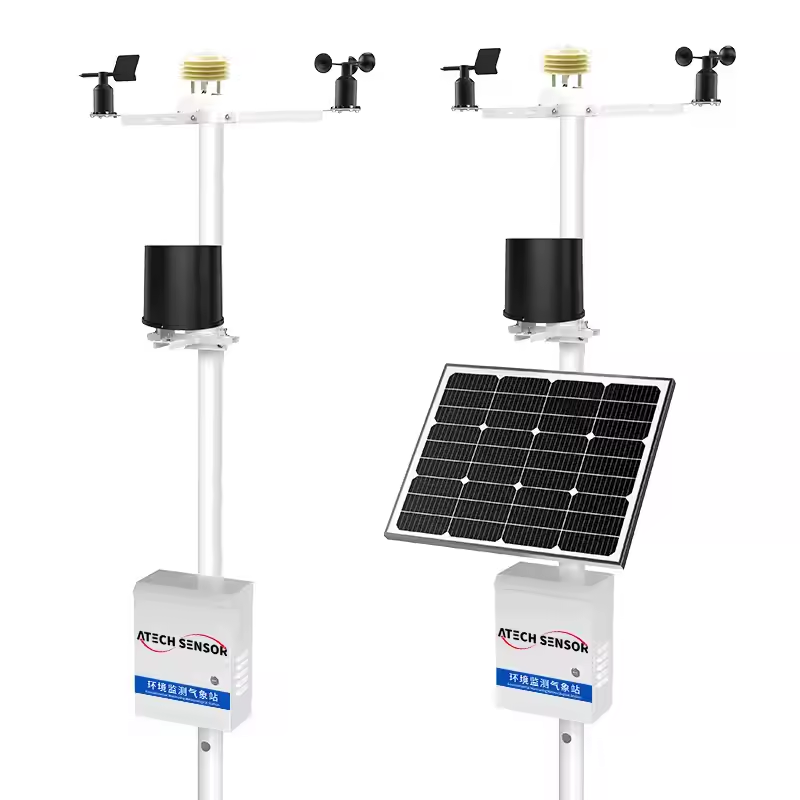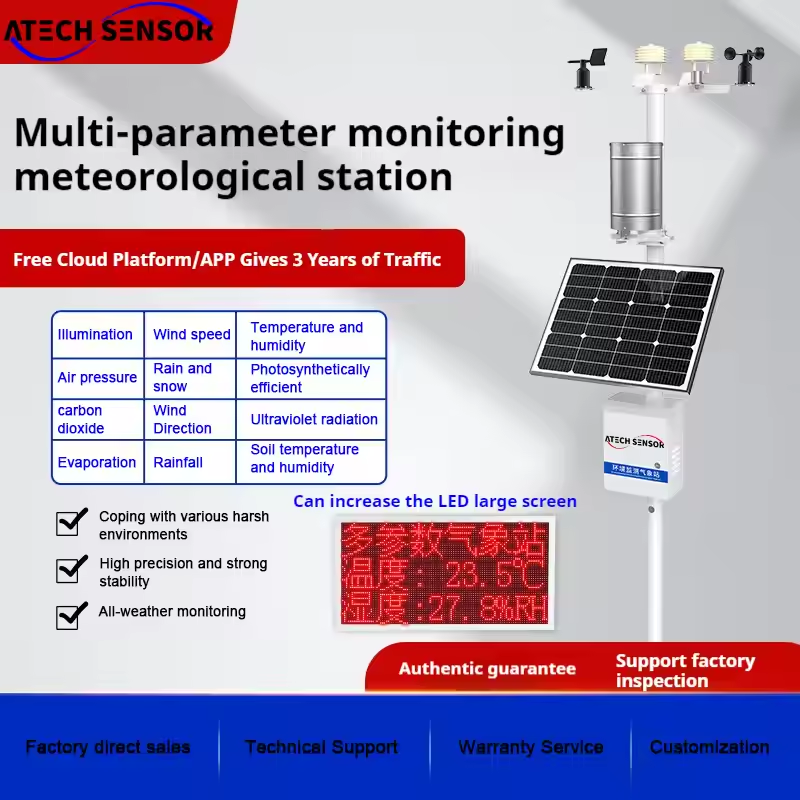Wireless weather stations use various weather sensors to collect near-real-time data, which is important for agriculture, meteorology, and environmental research. Additionally, these solutions allow weather stations to be deployed in remote locations, making it more efficient to collect critical data necessary to manage environmental challenges.
1.What is a Wireless Weather Station?
A wireless weather station is a system designed to monitor different environmental conditions using a variety of weather station sensors. These key components capture and communicate crucial information, such as temperature, humidity, UV level, wind speed range, wind direction, barometric pressure, and atmospheric pressure to an end platform used for near-real-time decision-making.
2.Technology Behind Wireless Weather Stations
The nature of wireless communication technology allows the sensors in a weather system to translate data seamlessly from the weather station to a data logger. This setup is ideal for users seeking accurate, real-time insights into weather conditions over an extended period. The data logger interprets, stores, and transmits the data gathered from the weather station. Collected data is then sent to the cloud and can be remotely accessed, eliminating the need for extensive wiring and providing simplified installation while allowing for flexible sensor placement. This makes it easier to expand the network with additional sensors, even in remote locations. accuracy, position

3.How Do Wireless Weather Stations Work?
Wireless weather stations have intricate and advanced technology to monitor environmental conditions efficiently and accurately.
Sensor Placement and Connectivity
Weather sensors are placed strategically to identify the most relevant environmental data, including wind speed and direction, for precise monitoring. These sensors connect wirelessly to real-time analytics and storage systems, ensuring accurate data collection and transmission.
Near-Real-Time Data Monitoring
Once installed, these weather sensors can display information on an end platform for monitoring and analysis, providing critical notifications and alerts. This data can be used to make more informed, data-driven decisions.
4.What Can Wireless Weather Stations Track?
Wireless weather stations are designed to capture a wide range of environmental metrics, providing real-time insights into current conditions.
They can track outdoor temperature and indoor temperature, temperature humidity levels, and rainfall data for accurately measuring rainfall over time. These systems often include sensors for solar radiation, location data, and wind speed, offering a comprehensive view of local weather patterns. By monitoring critical parameters like rain, temperature and humidity, these stations help users stay informed about changing weather conditions.
5.Benefits of Wireless Weather Stations
Wireless weather stations make it easier to monitor critical weather data in remote locations. These devices have a multitude of use cases, including:
1.Agriculture: Monitor soil moisture, temperature, and humidity, often used to optimize crop growth.
2.Meteorology: Collection of data for weather forecasts and climate studies.
3.Environmental Monitoring: Tracking of atmospheric conditions to study environmental changes.
Wireless technology eliminates the need for extensive wiring and maintenance that traditional weather stations require. This provides a cost-effective and efficient solution with regards to weather monitoring.
6.Integration with Weather Station Sensors
Integration with various weather station sensors allows for rapid deployment. Some common compatible weather sensors include:
- Temperature Sensors
- Humidity Sensors
- Wind Speed Sensors
- UV Sensors
- Atmospheric Pressure Sensors
Ensure optimal performance of these sensors, providing accurate and reliable data for comprehensive weather monitoring.

7.Summary
Wireless weather stations can collect accurate, real-time data that can be deployed flexibly and provide cost-effective monitoring solutions. Whether you are engaged in agriculture, meteorology, or environmental monitoring, such data loggers can be used to enhance the monitoring capabilities of the weather station.

